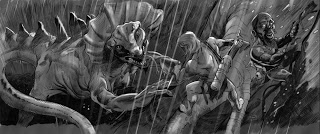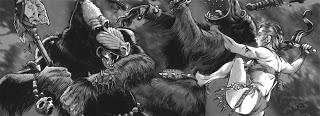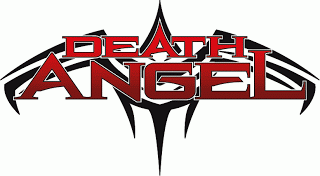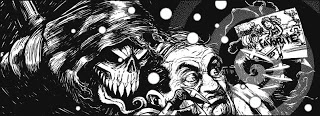AP: Andrew, it’s a real treat that you dropped by to visit with ALL PULP. Can you share a little background on yourself?
AS: It’s a real pleasure to be here! All Pulp may be relatively new but it has already become THE place to be for all the latest breaking pulp news. As for my background, I was born and raised in Montreal, Canada but moved to Vancouver with my wife in the hopes of becoming a professional writer. I’m also a lifelong movie fan and work as an extra in the thriving film industry here, being a small part of such films as WATCHMEN, the first Fantastic Four and the A-Team along with numerous TV shows/movies over the years. I’m a voracious reader of pulp and hardboiled fiction. I have a massive Spider-Man collection which I won’t be adding to any time soon since Marvel has ruined the character for me. I’m a diehard Montreal Canadiens fan. And I love classic rock: AC/DC, Dio, CCR, Beatles and a whole host of others.
AP: Your name graces the covers of several books that are making the rounds amongst pulp fans? Can you give us a rundown of the work you’ve done in the pulp world, including books, short stories, etc.?
AS: Sure. I’ve had the great good fortune to work with Airship 27/Cornerstone Book Publishers and have been part of a number of their fantastic pulp anthologies. I have tales in Secret Agent X: Volumes One and Three, Jim Anthony Super Detective: Volume One, Dan Fowler G-Man: Volume One, Black Bat Mystery: Volume One and still can’t believe that I’ve been part of both volumes of their Sherlock Holmes Consulting Detective series. And how could I forget collaborating with the great Ron Fortier on Ghost Squad: Rise of the Black Legion! I’ve also just had a short story appear in Pro Se’s Masked Gun Mystery #1.
AP: You have done quite a bit of work on established Pulp characters? What is the appeal of working on characters created sometimes more than a century ago for a modern writer?
AS: They are great characters. That’s pretty much it. They are fun, dynamic and the non-stop action pacing is too good to pass up from both a reading and writing standpoint. Also, unlike the pulp writers of the Golden Age, we have the benefit of hindsight and can explore historical themes the original pulp writers were not aware of or were unable to write about. For instance, my Dan Fowler tale (“The League of Dead Patriots”) deals with the Japanese internment camps of WW2 in a way that the pulps of the day would never have tried. And it doesn’t even have to go as far as the complete plot. Having that period be historical for us modern writers gives us great freedom to include little details here and there for attentive readers to catch. It can be something as simple as a nostalgic touch or historical name dropping. Plus with all these characters in the public domain, we can do the odd team up every now and then and really go to town! And there’s also the opportunity to grow the genre. Read the first Doc Savage and then the last novel from 1949, the characters are not the same. They have changed, evolved. Perhaps not for the better in some cases but that evolution is unmistakeable. I love all the great elements that go into a good pulp story. I wouldn’t write pulp if I didn’t. However with this new era of unprecedented pulp creation going on today, all of the modern day writers and artists are the new vanguard of the genre and it’s up to us to continue to grow the art form. That said, I feel I should stress that the classic elements have to be in place. That’s a must! But just like that subtle evolution from the 30s to the 40s, pulp needs to push the envelope a little. Being a small part of this new pulp revolution is one heck of a lot of fun. The myriad titles published in the 1920s, 1930s and 1940s demonstrate that there really are no boundaries when it comes to pulp and I’m curious to see where the genre is going. I think the genre can be experimented with and yet still be authentic to pulp readers young and old. It’s a great time to be a pulp creator and I wouldn’t miss it for the world!
AP: Sherlock Holmes. You’ve written a bit about the Master Detective for Airship 27. Why Holmes? What does this particular character touch in you as a creator?
AS: No one is more surprised than I am by how much I love to write Holmes and Watson adventures! When the opportunity first presented itself, I passed on it because I felt I was not qualified to play in that particular sandbox. Although I was fully aware of the characters and the rich legacy that has grown around them for more than a century, I had not actually read many of the stories. I think my Holmes exposure was limited to The Sign of Four and A Study In Scarlet, which I had read for a college course in mystery fiction. The 2 novels plus the odd story were pretty much it as far as my exposure to pure Holmes went. So who was I to try my hand at a tale?
Well, after I slapped myself silly and woke up, I realized that I’d been offered the chance to write, arguably, the two most popular characters in the history of pop culture! How could I say no? This lead straight to Doyle and a thorough reading of almost all of the original Holmes tales. And they won me over! I became an instant fan. This plus my love of writers like Charles Dickens and Thomas Hardy meant I was already steeped in the Victorian vernacular so to speak. So I sat down and started writing and had so much fun crafting a mystery with that beautiful language and those wonderful characters that I was finished the tale before I knew it. And I’m just getting started with Holmes and Watson! Watch out world! The game’s afoot!
AP: You’ve left your mark on several other Public Domain characters as well. Any favorites?
AS: First of all, thank you for suggesting I’ve added to the rich history of these already great characters. I take writing these public domain characters very seriously and consider it an honor to be able to do so. Favorites? Well, Holmes and Watson of course. And I love Secret Agent X! Fowler, Jim Anthony and the Black Bat are also great but if pressed for favorites, I’d have to go with the great consulting detective and the man of a thousand faces.
AP: What about public domain territory you’ve not yet ventured into. Any characters you want to write about in the future?
AS: Honestly, all of them! As for a list, well, the Green Lama comes to mind. Adam Garcia is having a Lama-fest these days and I can’t resist the urge to get in on the fun. Domino Lady guest-starred in my Fowler tale and she also great. Let’s see, Moon Man would be a lot of fun, Captain Hazzard (though my intrepid editor Ron Fortier will see that anyone who undertakes a Hazzard tale will meet with an unfortunate accident, cue organ music), the Scarlet Pimpernel, Allan Quartermain, Ebenezer Scrooge, the Masked Rider and a bunch more. The more the merrier! Writing pulp is just too much fun!
AP: A work that you co-wrote that has gotten a bit of buzz is THE GHOST SQUAD: RISE OF THE BLACK LEGION, co written with Ron Fortier for Airship 27. Can you give us a brief outline of this book?
AS: Working with Ron was one of the highlights of my writing career to date. Actually I should back that up. Just being ASKED to work with Ron was the true highlight. At the time, I’d only written 2 or 3 pulp tales and, out of the blue, the King of Modern Day Pulp asks me if I want to collaborate with him. Yeah, I had to think about that one for a nanosecond. The Ghost Squad consist of Lazarus (yes, that Lazarus from the bible), Lady Arcane, the mistress of the mystic arts, Alan Hale, pilot and brawler extraordinaire and Professor Andreas Vantassel who has more medical and scientific degrees than you can shake a stick at. The immortal Lazarus has become aware of a terrible threat to world peace, the Black Legion, and has put the Ghost Squad together as a top secret fighting team with government backing to combat this threat. The first novel introduced the characters and the menace of the Black Legion and had as much action as Ron and I could jam into it. The buzz you mentioned has been most welcome and truly appreciated by everyone involved with the book. With an amazing cover by comic artist Chad Hardin and interior illustrations by the incomparable Rob Davis, the first book kicked off the Squad in style and it’s immensely gratifying to hear that folks have enjoyed the book. And Book Two is in the works!
AP: How about co-writing? Some writers absolutely love to work on books with other authors, other writers absolutely detest it. How do you feel about it and what is the process you prefer to use when co-writing?
AS: I suppose it depends on who you are collaborating with. When Ron contacted me, I had never collaborated before so it was all new to me. And I had a blast! Ron implemented a method where one of us would do a chapter or two, then pass the book on to the other to whip up a chapter or two and this back and forth was a lot of fun. Watching the pages grow, finding emails with attached chapters of the novel already done so you don’t have to… it was great! I have nothing but good memories of working with Ron and can’t wait to do it again!
AP: You have your own creations as well. Can you list a few of those for our audience?
AS: Okay. Well, I self-published a long short story of mine called The Forty Club as a gift book since it dealt with the trials and tribulations of reaching that milestone. And my first full-length novel, The Dark Land, was also as self-published effort though a new, revised edition is coming from Airship 27/Cornerstone hopefully next year. The Dark Land is a near-future science-fiction mystery where a terrible pandemic has wiped out most of the world’s population, plunging the survivors into chaos. With the death of billions, the governments have resorted to cloned policemen grown from samples stored for just such a global emergency. The hero of the tale, C-Peter Reilly, is a clone but he remembers the life of his source material and that is a big no-no so while he’s on the case, he’s plagued by memories of loved ones he never really had but who are more dear to him than anyone. I have a superhero serial running in A Thousand Faces magazine featuring Fred Brand and Project X – as an unlikely a duo as you’re liable to find anywhere. I’ve sprinkled a few other stories around here and there in Storyteller, TBT, Thirteen Stories magazines and others. And I just had my very first pulp short story appear in Masked Gun Mystery #1 from Pro Se Productions. The story is called “Run” and it is very dear to my heart because it was the story I sent to Ron as my audition for joining the ranks of Airship 27. And it got me the gig! My biggest non-pulp work is The Light Of Men, the response to which has been nothing short of staggering and humbling.
AP: Talk a little about THE LIGHT OF MEN, about the story itself and whether or not you feel it is pulp.
AS: The novel took me a little more than 12 years to research and write as it is set in a Nazi concentration camp and I wanted to get all the details right. The tale is set in the dying days of the war and a strange prisoner is admitted who appears to have his own agenda, his own reason for being there aside from being arrested. I can’t really say more without giving away too much of the tale but I will say that there is a science-fiction element in the novel and we’ll leave it at that. The book has been added to the Holocaust Memorial Museum Library in the US, has received very good reviews, and was even a book club read for a group of bloggers – all of which has been simply amazing. As you might imagine from the subject matter, it is not a light-hearted tale. My goal was to give modern readers the genuine experience of what it was like to be in one of those horrible camps and I pulled no punches. I’ve heard from readers that this was the experience they had reading the book which has been immensely gratifying because it means all those endless hours of research paid off. Although there is action in the novel, I would not classify it as pulp. It’s more of a literary work though there is a good dose of action along with that science-fiction element I mentioned. Unlike writing pulp, writing this novel was not a lot of fun, but it is the work I’m most proud of to date.
AP: Can you share anything about the super hero serial you’re creating for A Thousand Faces Magazine?
AS: Sure, I’d be happy to. The Brand/X serial took on a life of its own with me. The first tale, “Soar”, was supposed to be the only tale. It dealt with the general fascination we all have, as comic and pulp fans, with flying. Wizard used to have a monthly poll where fans could vote on the super power they most wanted to have and flying won month in and month out. So I came up with the idea of a two-bit crook whose greatest high is to be carried by a superhero in full flight. Flying, or soaring, becomes a full-blown addiction with him. Thing is, the only way to fly with a hero is to commit a crime and get carted off to jail. Thus poor Fred’s life becomes reduced to doing time until being released from jail so he can commit a crime and get that high when a hero scoops him up to send him back to prison. The pay off for this was that, like most junkies, more is always needed to fix and the short flights no longer do it for him. So he comes up with an idea for the longest and best flight of his life, which is also supposed to be his last. Fred Brand was supposed to commit suicide in achieving this ultimate high, going out in one final blaze of glory. However when it came time to write that scene, something just clicked in my head and Fred survived that first tale. I sent it off to the magazine, crossed my fingers, and moved on. To my delight the story was accepted and was published in issue #0. Well, a few readers wrote in expressing their fondness for Brand and speculating on what would happen next with him. This blew me away, because I certainly hadn’t thought that. But their discussions got me thinking and I found myself asking, “Yeah, what does happen to him?” and now I’m on a journey with Fred and Project X to find out. Six tales have appeared to date, the last just a few months ago. And they are all still available in issues #0, 2, 3, 5, 7 and 12. With more to come…
AP: You’ve been nominated for at least two awards and won one of those. What awards were those and how does that sort of attention affect you as a writer?
AS: My second published tale, “A Turn of the Scrooge” was nominated for an Arthur Ellis Award, which is the Canadian equivalent of the Edgar. It didn’t win, but coming so early in my career I really could say that it was truly and honor and thrill just to be nominated for so prestigious an award. Last year my novelette, “The Adventure of the Locked Room”, won the Pulp Factory Award for Best Pulp Short Story of the Year. The story was part of Airship 27’s first Holmes anthology (Sherlock Holmes Consulting Detective: Volume One) and the book also took home awards for Best Pulp Cover (Mark Maddox) and Best Pulp Interior Art (Rob Davis).
The awards were presented at the Windy City pulp show in April and to say I’m still on Cloud 9 would be the understatement of the year! I was, and still am, completely bowled over by winning the award. As I’ve only been reading pulp for about 10 years and writing it for only 3 or 4, I still consider myself the new kid on the block with a lot still to learn so to win one of these beautiful awards so early in my pulp career, well, there are simply no words to truly express the feeling. What affect did it have on me? Well, it showed me that I’m on the right track with my pulp work. The awards are voted on by pulp writers, artists and fans. Getting the nod from a group like this covers all the bases, doesn’t it? Also, as a writer, you never know if your work is good or not until someone reads it. You can think it is, convince yourself it is, but the only way to truly know is to hear from people who know the genre, have read your story and enjoyed it. Hearing positive feedback from readers through reviews or emails is a precious reward in itself. Being voted an award by your peers is just the icing on the cake. And it is a humbling experience. You think: “Wow! Folks actually read my story and liked it! It affected them!” It’s what every writer works towards. For those of you who don’t know, the awards are presented annually by the Pulp Factory to recognize outstanding achievement in pulp writing and art and any new published work set in 1940 or earlier is eligible for nomination in a given year. So get scribbling pulp creators, you could be the next winner!
AP: Anything coming in the near future from the mind and pen of Andrew Salmon you want to talk about?
AS: Well, I’ve just learned that my third Sherlock Holmes tale has been accepted by Airship 27 and will appear in Volume Three of that bestselling series. Look for that in January. Mars McCoy Space Ranger is also about set to blast off from Airship 27 and I’ve got a tale in that along with a bunch of other great pulpsmiths. There’s that revised edition of The Dark Land looming. And I’ve just finished a collaboration on a novelette with pulp fan Mark Halegua who created a hero called the Red Badge. Readers can look for that in an upcoming Airship 27 release. As for works in progress, well, I’ve got some novel ideas… literally. I’m currently working on a novel featuring German pulp heroes which I think is going to knock a few folks for a loop. I’ve also been given the nod by Air Chief Ron to write a full-length Sherlock Holmes novel and was press-ganged by Ron and artist Rob Davis at the Windy City show a couple of years back to write a Secret Agent X novel. Believe me, no arm twisted was involved. Ha! I kicked ideas around for an epic X tale and I think I’ve hit on one that will work. Along with all that, I’d like to do more Fred Brand tales, and maybe throw in a pulp novelette along the way. Also, I sit daily with fingers crossed as I await word on the Green Hornet tale I submitted to Moonstone for the upcoming Green Hornet Casefiles anthology. Working with Joe Gentile and Moonstone was a lot of fun and I’ll gladly do it again if they want me. As I’m a huge Operator 5 fan, and, I believe, they are now doing 5 stories, I’ll say a prayer every night that Joe gives me the go ahead to do one. I guess to sum up my plans I can just say: pulp and more pulp! I’m having the time of my life here!
AP: Andrew, thanks again and come back to visit ALL PULP anytime.
AS: It’s been my sincere pleasure! Thanks for having me. I’d love to do it again sometime. Hey! I check All Pulp every day and so should every pulp fan. Pulp fiction is back, big time! There’s a lot of truly great stuff being created today to stand shoulder to shoulder with the great work of the past giants. All Pulp celebrates that. If you’re a pulp fan, what more could you ask for?


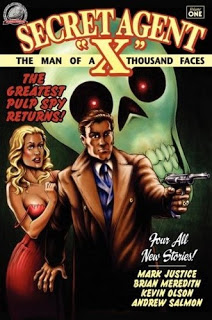
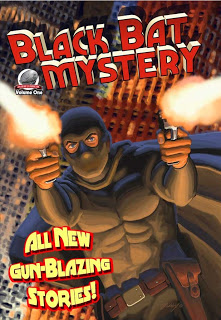
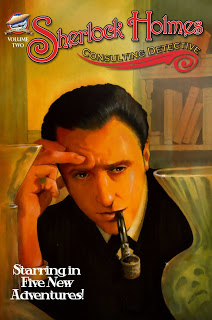
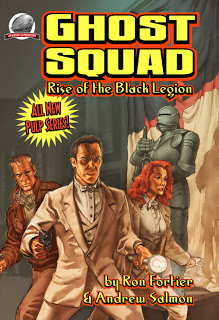
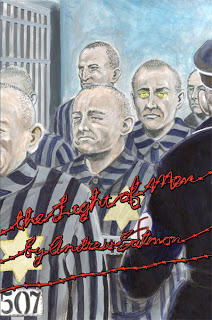

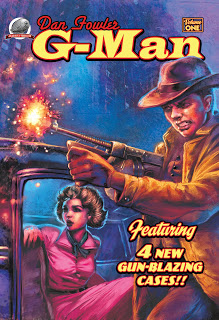






 Day twelve of NaGraNoWriMo, and we’re bringing in some fresh voices to add their expertise. First up is
Day twelve of NaGraNoWriMo, and we’re bringing in some fresh voices to add their expertise. First up is 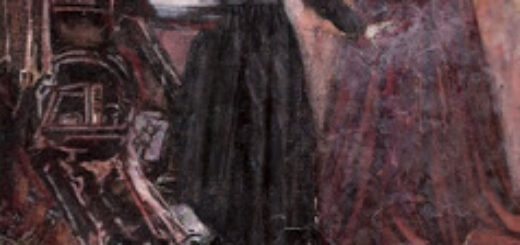
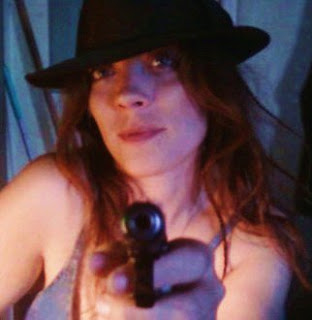
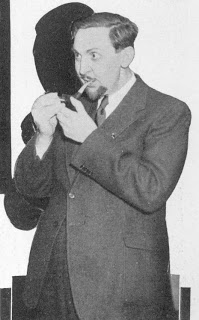
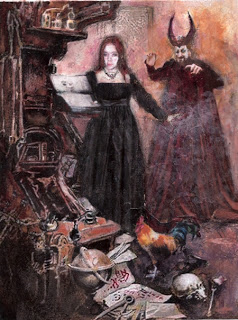
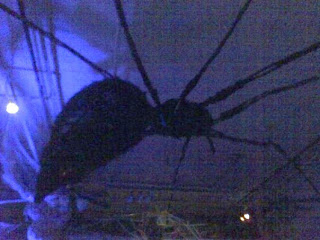
 Day eleven. Are you ahead of where you thought you’d be? Or have you fallen behind?
Day eleven. Are you ahead of where you thought you’d be? Or have you fallen behind? Walt Disney is one of the first entertainment companies to carefully archive its creative works. As a result, as the films were retired and then re-released to the next generation of children, they had a plethora of material to work with in order to freshen the content and marketing. This has led to quite a number of wonderful books exploring the rich corporate history.
Walt Disney is one of the first entertainment companies to carefully archive its creative works. As a result, as the films were retired and then re-released to the next generation of children, they had a plethora of material to work with in order to freshen the content and marketing. This has led to quite a number of wonderful books exploring the rich corporate history.
 When the U.S. Government asked Disney to be a cultural ambassador to South America, the stage was set for Walt’s very own real-life adventure. With a group of handpicked artists, later called “El Grupo,” Disney’s WWII road trip achieved the impossible – goodwill – and in the process paved the way for two classic Disney films, Saludos Amigos and The Three Caballeros. Brought to life through rare footage and enriched with never-before-seen bonus features, Walt & El Grupo is a story of inspiration, joy and hope you won’t soon forget.
When the U.S. Government asked Disney to be a cultural ambassador to South America, the stage was set for Walt’s very own real-life adventure. With a group of handpicked artists, later called “El Grupo,” Disney’s WWII road trip achieved the impossible – goodwill – and in the process paved the way for two classic Disney films, Saludos Amigos and The Three Caballeros. Brought to life through rare footage and enriched with never-before-seen bonus features, Walt & El Grupo is a story of inspiration, joy and hope you won’t soon forget.